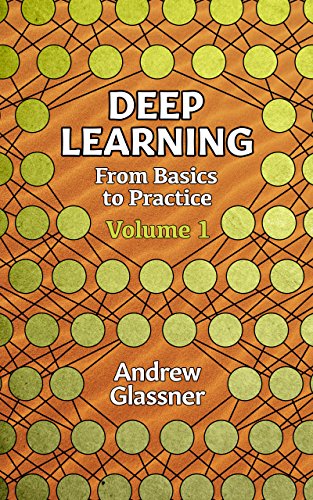
Deep Learning, Vol. 1: From Basics to Practice
- Length: 909 pages
- Edition: 1
- Language: English
- Publication Date: 2018-02-19
- ISBN-10: B079XSQNRX
- Sales Rank: #282648 (See Top 100 Books)
People are using the tools of deep learning to change how we think about science, art, engineering, business, medicine, and even music. This book is for people who want to understand this field well enough to create deep learning systems, train them, and then use them with confidence to make their own contributions.
The book takes a friendly, informal approach. Our goal is to make the ideas of this field simple and accessible to everyone, as shown in the Table of Contents below.
Since most practitioners today use one of several free, open-source deep-learning libraries to build their systems, the hard part isn’t in the programming. Rather, it’s knowing what tools to use, and when, and how. Building a working deep learning system requires making a series of technically informed choices, and with today’s tools, those choices require understanding what’s going on under the hood.
This book is designed to give you that understanding. You’ll be able to choose the right kind of architecture, how to build a system that can learn, how to train it, and then how to use it to accomplish your goals. You’ll be able to read and understand the documentation for whatever library you’d like to use. And you’ll be able to follow exciting, on-going breakthroughs as they appear, because you’ll have the knowledge and vocabulary that let you read new material, and discuss it with other people doing deep learning.
The book is extensively illustrated with over 1000 original figures. They are also all available for free download, for your own use.
You don’t need any previous experience with machine learning or deep learning for this book. You don’t need to be a mathematician, because there’s nothing in the book harder than the occasional multiplication. You don’t need to choose a particular programming language, or library, or piece of hardware, because our approach is largely independent of those things. Our focus is on the principles and techniques that are applicable to any language, library, and hardware.
Even so, practical programming is important. To stay focused, we gather our programming discussions into 3 chapters that show how to use two important and free Python libraries. Both chapters come with extensive Jupyter notebooks that contain all the code. Other chapters also offer notebooks for for every Python-generated figure.
Our goal is to give you all the basics you need to understand deep learning, and then show how to use those ideas to construct your own systems. Everything is covered from the ground up, culminating in working systems illustrated with running code.
The book is organized into two volumes. Volume 1 covers the basic ideas that support the field, and which form the core understanding for using these methods well. Volume 2 puts these principles into practice.
Deep learning is fast becoming part of the intellectual toolkit used by scientists, artists, executives, doctors, musicians, and anyone else who wants to discover the information hiding in their data, paintings, business reports, test results, musical scores, and more.
This friendly, informal book puts those tools into your pocket.
For a more information, see https://www.dlbasics.com
Table of Contents
Chapter 1 Introduction To Machine Learning
Chapter 2 Statistics
Chapter 3 Probability
Chapter 4 Bayes’ Rule
Chapter 5 Curves And Surfaces
Chapter 6 Information Theory
Chapter 7 Classification
Chapter 8 Training And Testing
Chapter 9 Overfitting And Underfitting
Chapter 10 Neurons
Chapter 11 Learning And Reasoning
Chapter 12 Data Preparation
Chapter 13 Classifiers
Chapter 14 Ensembles
Chapter 15 Scikit-Learn
Chapter 16 Feed Forward Networks
Chapter 17 Activation Functions
Chapter 18 Backpropagation
Chapter 19 Optimizers







